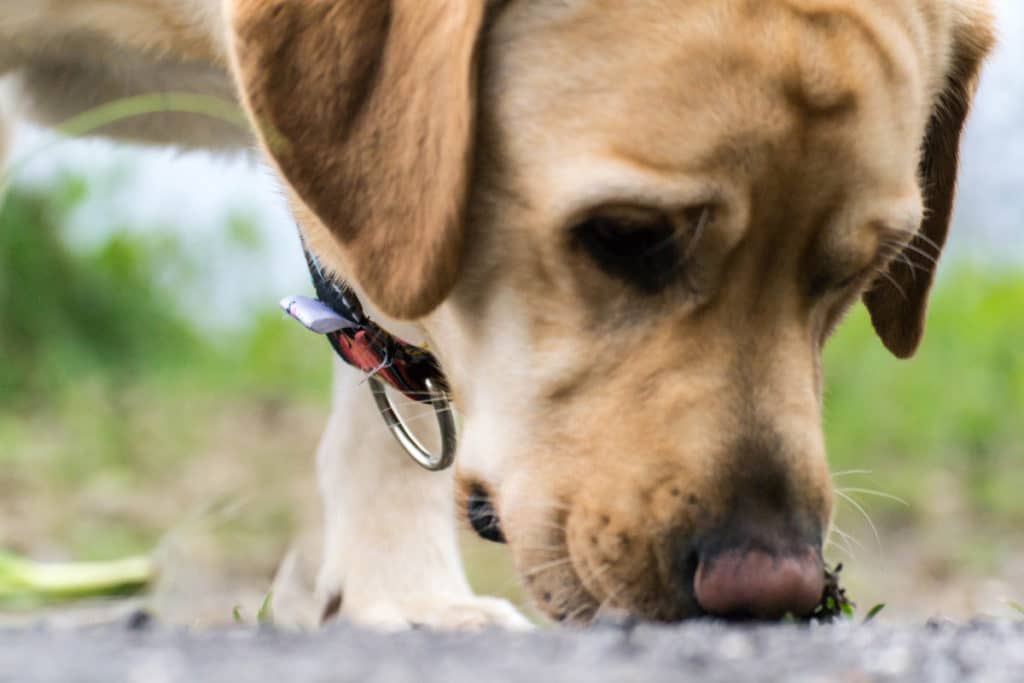Are mushrooms toxic and harmful to dogs and cats?

Answer: YES!
Dogs and cats are natural scavengers and foragers. As pet owners we have seen it all! Our beloved pet happily, snuffling and sniffing away at the ground. Then that all too familiar look of our dog or cat delightfully chewing away at something secretly, that they probably shouldn’t be! Upon investigation, we are either repulsed or relieved with what our intrepid pet has found. However, something as simple as a mushroom growing wild in your back garden, parks, or your favourite walking track, is anything but innocent or safe.
My dog ate a mushroom! Help!
There are thousands of different species of mushrooms growing wild that can be highly toxic to dogs and cats. Don’t worry if your dog snaffled the store brought mushroom that dropped on the floor in your kitchen; whilst you prepared your meal of beef stroganoff. However, mushrooms growing in the wild are a very different story. If consumed by a dog or cat they can become severely ill very quickly, and sadly in some cases died from the effects of wild mushroom toxins.
If you suspect your dog or cat has eaten a mushroom, do not delay in getting veterinarian assistance:
- Take your dog or cat immediately to the veterinarian clinic for assessment and treatment.
- Do not try to induce vomiting in your dog or cat. This needs to be done professionally and safely.
- If you have a piece of the mushroom consumed, do not touch it with bare hands. Where possible pick it up and wrap in a paper towel and store in a paper bag. Make sure you wash your hands thoroughly if you come into contact. If unable to pick it up take a photo for further identification.
Symptoms to look for with toxic mushroom poisoning:
- Vomiting
- Diarrhea
- Increase or decrease in urine production
- Depression
- Liver failure
- Kidney failure
- Seizures or fitting
- Wobbly or drunken stagger when walking, appears to be hallucinating
- Symptom’s timelines are dependent on what type of mushroom had been consumed:
- Immediately affected or from 3-6 hours, signs off vomiting or diarrhea.
- Or with progressive symptoms over 3-14 days.
Why do mushrooms appear? And what types are there?
During the warm and wet seasons, moist conditions promote wild mushroom growth. Needless to say, we have had ALOT of rain of late and conditions are prime for wild mushrooms to grow.
Mushrooms can pop up anywhere seemingly overnight, in your back gardens, lawns, parks, walkways, and garden beds. Be alert and diligent checking your back garden on a regular basis for mushrooms especially if your pet is an outdoor animal.
What mushrooms to look out for?
 There are thousands of different fungi (mushroom) species. Each with varying degrees of toxicity. It is best to assume if it’s a wild mushroom, it potentially contains toxins and may be poisonous. It is best to be on the side of caution and treat even the tiniest amount of consumed mushroom immediately.
There are thousands of different fungi (mushroom) species. Each with varying degrees of toxicity. It is best to assume if it’s a wild mushroom, it potentially contains toxins and may be poisonous. It is best to be on the side of caution and treat even the tiniest amount of consumed mushroom immediately.
In Australia, Cortinarius Australiensis is just one species of fungi (mushroom) that you may see. However, there are many different looking fungi that are within this family group.
What is the treatment for Mushroom poisoning?
Early intervention treatments are key. If poisoning is suspected the earlier you bring your dog or cat to see your vet, the sooner treatment can start. The vet will induce vomiting for the dog or cat by administering charcoal. Causing the dog or cat to vomit and bring up with it from the stomach the contents of the toxic mushroom. This is cost effective and less damaging for your dog or cat. Additional treatments such as IVF fluid may be needed if they are dehydrated depending how long ago the dog or cat ingested the toxic mushroom. If the mushroom has been ingested for a long period hospitalisation maybe required.
If you are in any doubt about what to do with mushroom poisoning, please get in touch with Vetmed for professional, helpful advice.
